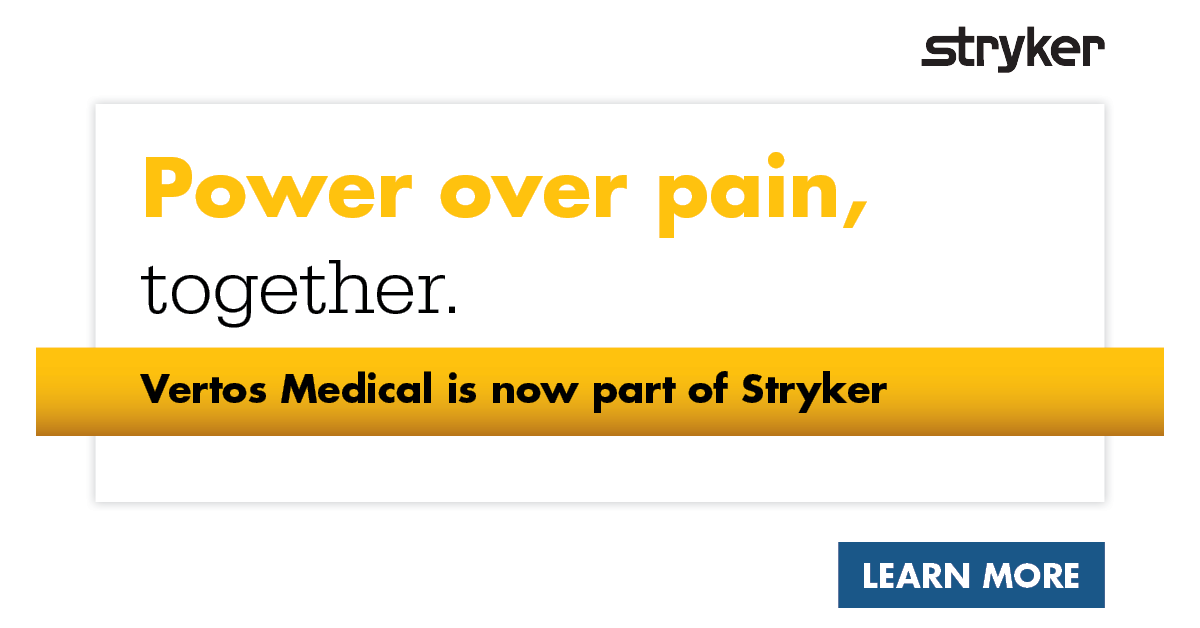Understanding Lumbar Spinal Stenosis with Neurogenic Claudication
Published May 16, 2022
What is Lumbar Spinal Stenosis?
Lumbar spinal stenosis, or LSS, is a common condition in which the lower spinal canal narrows and compresses the nerves in the lower back. Lumbar spinal stenosis is generally caused by aging and natural wear and tear on the spine. With lumbar spinal stenosis, thickened ligament, overgrowth of bone, and/or bulging discs in the lower back put pressure on the spinal nerves. This pressure can cause a variety of symptoms that affect daily life, including pain and limited mobility.
Up to 85% of spinal canal narrowing is caused by thickened ligament.
Lumbar spinal stenosis (LSS) is a common condition. In fact, over two million LSS patients nationwide are diagnosed and treated annually.LSS is generally found in people over the age of 50, and the likelihood of developing LSS increases with age.
Lumbar spinal stenosis is diagnosed by a medical history that includes a review of symptoms, as well as other tests that may be performed to verify LSS, including physical examinations to test mobility, and imaging such as X-rays, MRI, and CT scans.
People diagnosed with lumbar spinal stenosis may also have been diagnosed with, or be affected by, several other conditions of the lower back, including spondylosis, degenerative disc disease, foraminal narrowing, lateral recess narrowing, or facet hypertrophy.
Treatment options for lumbar spinal stenosis include conservative therapies (e.g., physical therapy, pain medication, chiropractic), epidural steroid injections, the mild® Procedure, spacer implants, and open surgery. mild® is an early treatment option to consider when conservative therapies are not providing adequate relief.
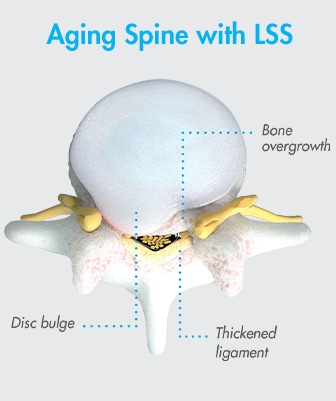
mild® is the only treatment with a safety profile similar to an injection, and the lasting relief expected from back surgery.
The mild® Procedure addresses a major root cause of LSS by removing excess ligament tissue to restore space in the spinal canal.
What is Neurogenic Claudication?
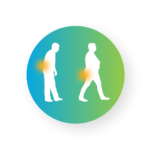

Neurogenic claudication (NC) is a syndrome, also described as a “collection of symptoms,” that is commonly diagnosed with lumbar spinal stenosis. Symptoms associated with NC result from the narrowing of the spinal canal that compresses the nerves in the lower back, and include pain, numbness, tingling, or heaviness in the lower back and legs. These symptoms are often brought on by walking or standing, as an upright posture places additional pressure on the nerves in the lower back. Symptoms may be relieved by sitting, bending forward, or sleeping curled in the fetal position, which can help reduce pressure on the spinal nerves.
Lumbar spinal stenosis with neurogenic claudication can be treated by a range of therapies that include conservative approaches such as medication or physical therapy, minimally invasive treatments, or surgery. The mild® Procedure is a minimally invasive option that addresses a major root cause of LSS by removing excess ligament tissue to restore space in the spinal canal. By reducing the compression on the nerves, the mild® Procedure helps restore mobility and relieve lower back and leg pain associated with neurogenic claudication.
What are the Symptoms of Lumbar Spinal Stenosis (LSS) with Neurogenic Claudication (NC)?
Symptoms of LSS with NC include pain, numbness, tingling, or heaviness while standing or walking that is relieved by sitting, bending forward, or sleeping curled in the fetal position.
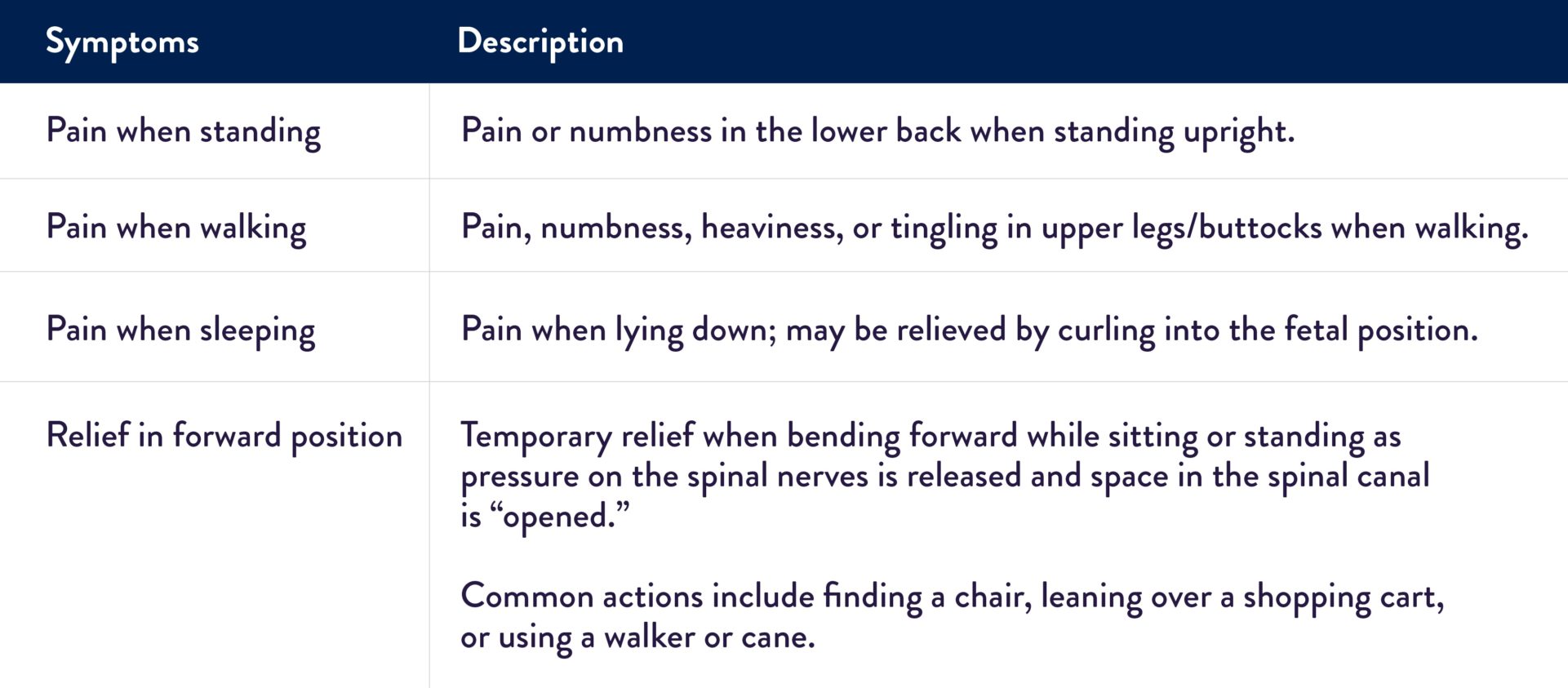
“It affects everything you do in life. I was probably able to walk [only] 10 to 15 minutes. I told my family that unless something changed, we wouldn’t be having a big Christmas meal next year. But things changed, and we had the big dinner.”
– Watch Lynn’s story
How is Lumbar Spinal Stenosis with Neurogenic Claudication Diagnosed?
Lumbar spinal stenosis with neurogenic claudication is diagnosed by a doctor or Advanced Practice Provider (APP). In addition to taking a medical history that includes a list of symptoms, other tests that may be performed to verify LSS with NC include:
- Physical examinations to test mobility
- X-rays
- MRI
- CT scan
During the patient consultation, healthcare providers may ask patients a series of questions to understand how LSS affects the patient, including:
- How long can you stand before you need to rest?
- How far can you walk before you need to rest?
- Do you often lean on shopping carts and other objects for support?
- How does pain disrupt your life?
Using these questions, providers can determine if the patient is a good candidate for mild®, a treatment that addresses a major root cause of their LSS with neurogenic claudication.
If you would like to locate a doctor who treats lumbar spinal stenosis with neurogenic claudication in your area, click here.
“When patients have neurogenic claudication, their spinal canal has narrowed. If you think about your spinal canal, it’s like a garden hose. It is a nice, round circle which allows neural input from the brain to get to the lower extremities. If the garden hose gets a kink in it, less water comes out of the hose to water your plants, or in this case, less neural information from the brain gets to the lower extremities. By debulking the excess ligament that causes the kink, we can create more space and provide relief.”
– Dr. Denis Patterson, Nevada Advanced Pain Specialists
What is the Difference Between an Epidural Steroid Injection and the mild® Procedure?
Two common treatments for lumbar spinal stenosis with NC are epidural steroid injections and the mild® Procedure.
An epidural steroid injection, which is a medication injected in the lower spine to reduce swelling and offer pain relief, is typically offered to LSS patients when non-medical care methods like exercise and physical therapy have failed to provide relief. The steroid medication in the injection is believed to reduce inflammation which relieves pain; however, injections only treat the symptoms of LSS and do not address the root cause of the problem.
- The effects of epidural steroid injections typically last less than 6 months
- To provide long-term relief, patients often require 2-3 injections in the lower back on average per year
- Steroid use is known to increase risk of infections and may cause bone loss known as osteoporosis
The mild® Procedure – Minimally Invasive Lumbar Decompression
The mild® Procedure is a short, outpatient procedure that can be performed using only local anesthetic and light sedation. The procedure is performed through an incision in the lower back which is smaller than the size of a baby aspirin, or the diameter of a drinking straw (5.1mm) (Figure 1). The mild® Procedure addresses a major root cause of LSS by removing excess ligament tissue which has built up around the spine. This restores space around the spinal cord, which reduces the pressure on the nerves in the lower back (Figure 3).
- The mild® Procedure does not leave behind an implant, and patients typically resume normal activity in 24 hours with no restrictions.
- The mild® Procedure does not require stitches, staples, or complex bandaging. Typically, patients leave the outpatient procedure facility, with just a Band-Aid covering their incision, and visit their doctor a few days post-procedure for a quick wound check to ensure healing is progressing normally.
- mild® has a safety profile similar to epidural steroid injections, but with lasting results.
- mild® doesn’t eliminate future treatment options because no major structural anatomy of the spine is altered.
Research identifies mild® as a first-line treatment option for LSS, with several key advantages, including lasting pain relief and increased mobility. The mild® Procedure is the only treatment with a safety profile similar to an injection, and the lasting relief expected from back surgery. A Cleveland Clinic 5-Year Study showed mild® helped 88% of patients avoid back surgery for at least 5 years while providing lasting relief.
How does mild® Procedure Treat LSS with NC?
Up to 85% of spinal canal narrowing is caused by thickened ligament. mild® addresses this major root cause of LSS, by removing excess ligament tissue using specialized tools and imaging, and leaves no implants behind.
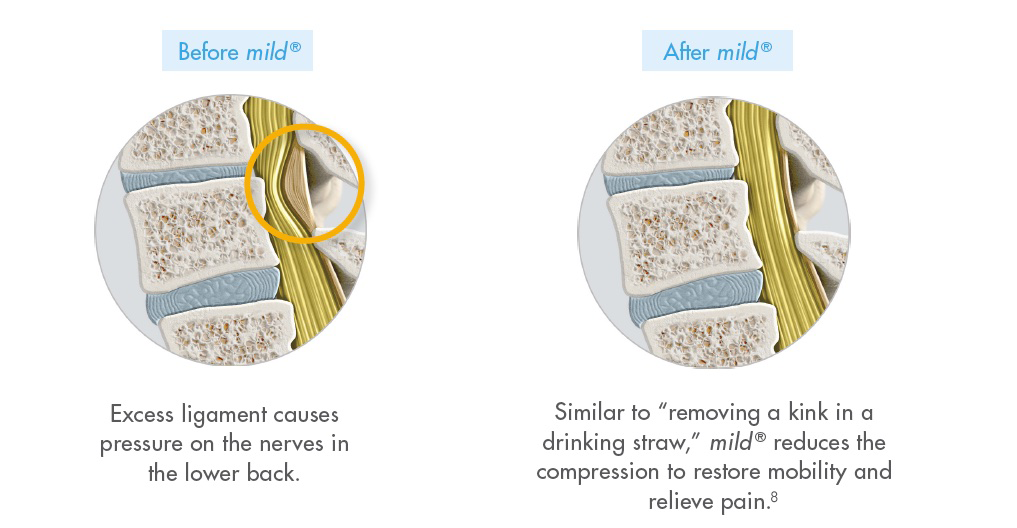
What Should Patients with LSS with NC Expect from Their mild® Procedure?
The mild® Procedure is a short, outpatient procedure with a safety profile similar to an injection.The procedure can be performed using only local anesthetic and light sedation and leaves no implants or stitches behind, only a Band-Aid. Most patients return to their normal activity level in 24 hours with no restrictions and see functional improvement over time. To optimize the results of the mild® Procedure, patients are encouraged to participate in a reconditioning program to regain strength and mobility.
Patients typically recover and resume normal activity within 24 hours with no restrictions.
Is the mild® Procedure an Effective Treatment for LSS with NC?
The mild® Procedure has been proven an effective treatment for LSS with NC. In a Cleveland Clinic study, mild® helped 88% of patients avoid back surgery for at least 5 years while providing lasting relief.
Every year, thousands of LSS patients are able to stand longer and walk farther with less pain, thanks to mild®.
In a separate study conducted by the Cleveland Clinic, clinicians tracked patient results for one year after the mild® Procedure. The published data showed:
- Average standing time increased from 8 to 56 minutes with less pain
- Average walking distance increased from 246 to 3,956 feet with less pain
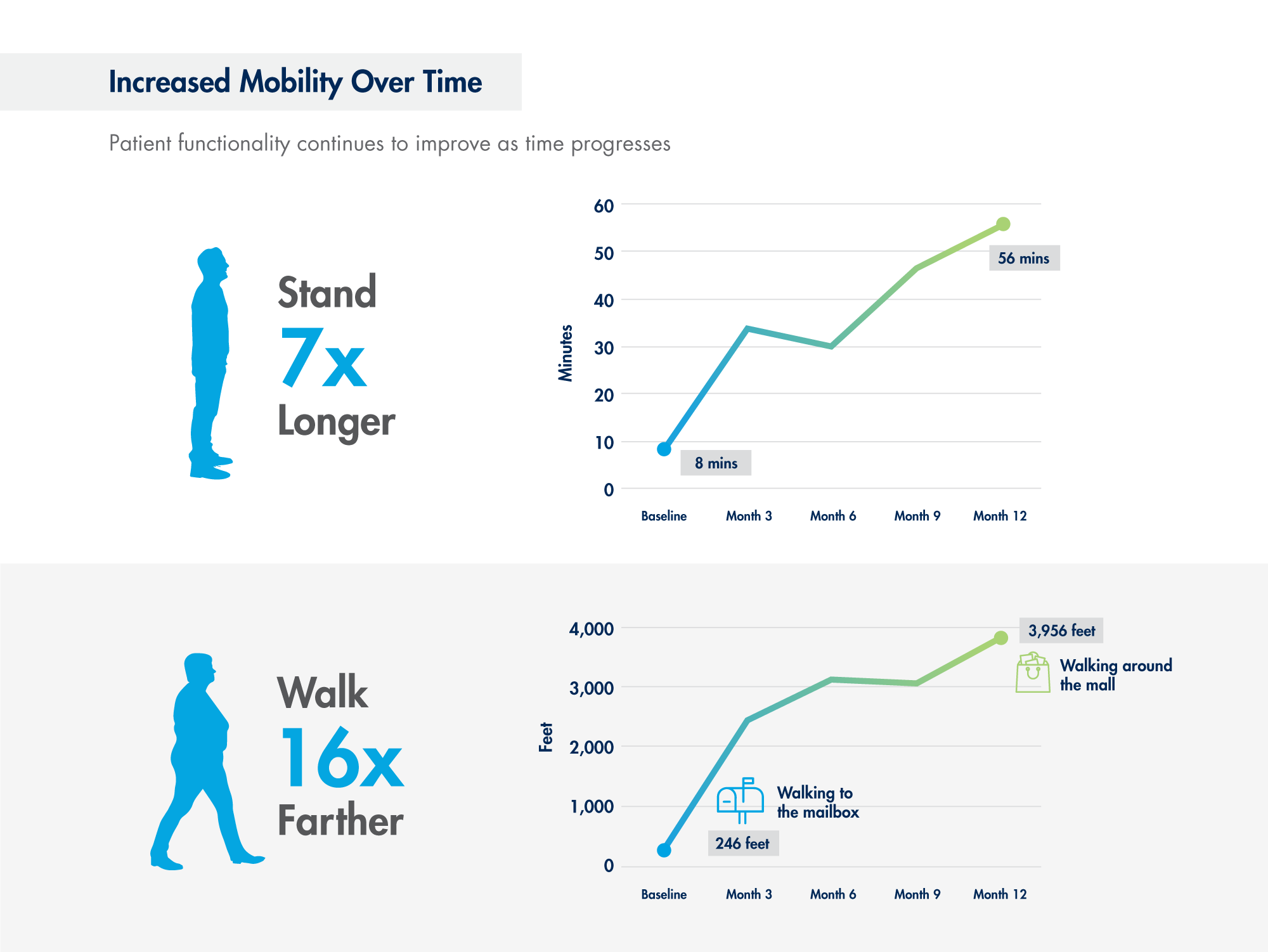
“Before, I couldn’t walk a block without having to sit down and bend over. When I was going through the epidurals, I’d have a few days of respite and then it would kick up again. Sometimes, I didn’t have any days–it just didn’t stop hurting. My doctor told me there was a procedure called the mild® Procedure and I said, ‘let’s do it.’ Since then, I’ve been a new person. I’m not in pain; I don’t need to bend over. Every day I pinch myself and say, ‘wow.’ I’m still walking without pain.”
– Watch Nicky’s Story
If You Think You May Have Lumbar Spinal Stenosis with Neurogenic Claudication, What Steps Should You Take?
If you suspect you may have lumbar spinal stenosis with neurogenic claudication, the first step is to talk to a qualified doctor who specializes in treating LSS. If you have already received a diagnosis, mild® specialists in your area can help you confirm your diagnosis and get on the path to lasting relief.
Use our Find a mild® Doctor tool to connect with an interventional pain management specialist in your local area.

